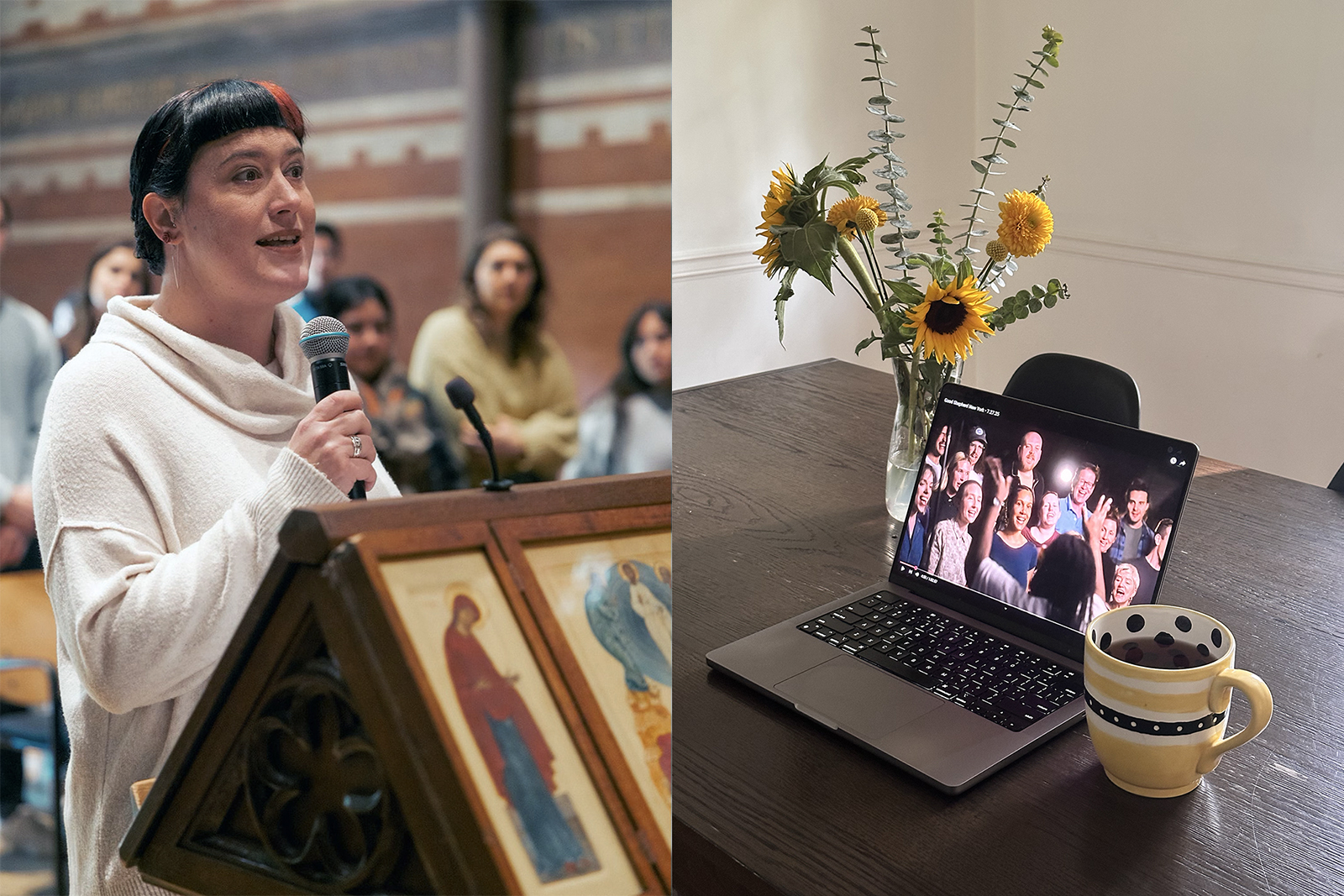
(RNS) — After Becky Hope left the evangelical church she had been attending in Portland, Oregon, four years ago, she began watching online services at an ecumenical church in New York City — just for a little while, she figured, until she found something closer to home.
But after a few months, Hope, 40, found that the digital experience was as fulfilling as any she has had, especially after the church — Good Shepherd New York — began a small group for people watching online from the Pacific Northwest.
“I just fully fell in love and found a community within the digital space, which was not expected,” said Hope, describing Good Shepherd as a place where she has has felt “seen and known.”
Even so, Hope, an educator who was raised Catholic, missed receiving the Eucharist. For that, she began attending Trinity Episcopal Cathedral in downtown Portland in person every Sunday, as well.
“It really matters to me to be physically partaking in Eucharist with people sitting next to people.”
For Hope, participating in multiple churches neatly fills her needs. And it is increasingly common for others, too.
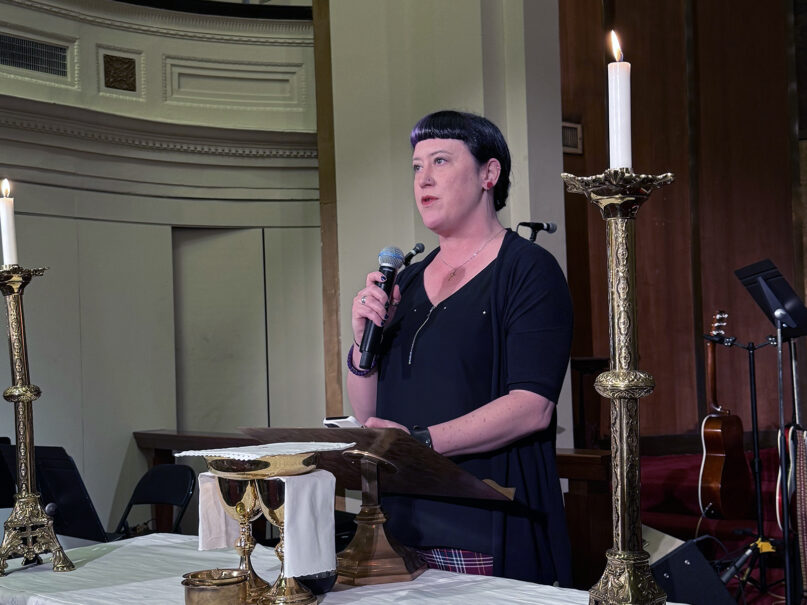
Becky Hope attends a retreat for digital congregants of Good Shepherd New York in New York City. (Photo by Alex Scott)
A recent survey conducted by the Hartford Institute for Religion Research found that nearly half of American churchgoers — 46% — attend church services in multiple locations in person and/or online.
RELATED: What church do you attend? Maybe more than one, survey finds
The survey of 24,000 churchgoers (the survey did not include people of other faiths) found that increased online access as a result of the coronavirus pandemic may have driven up multiple church attendance. But the survey also shows most people who attend multiple services do so both in person and online.
“I do think for some people the behavior has changed because of the pandemic,” said Scott Thumma, the lead researcher for the Exploring the Pandemic Impact on Congregations survey.
But, he said, it’s possible it began even before the pandemic. No earlier nationally representative data exists as a comparison.
It’s clear COVID-19 allowed worshippers to church hop from the comfort of their couch, revealing a far greater variety of services. It made them savvier about finding other options, whether online or in person.
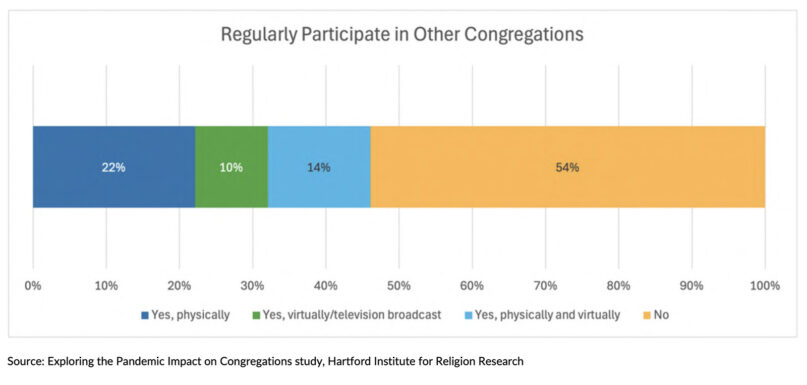
“Regularly Participate in Other Congregations” (Graphic courtesy of HIRR)
The younger the churchgoer, the more likely they were to seek out multiple church homes. The survey found that 63% of churchgoers aged 18-34 said they attend multiple churches, and that percentage drops the older the churchgoer is. Only 34% of churchgoers older than 65 participate in multiple church services.
That aligns with the collapse of loyalty to religious institutions and institutions generally. Younger people in particular are unlikely to stick with one church, one denomination or even one faith their entire lives. That doesn’t mean their religious impulse has vanished. Younger people still search for ultimate meaning and transcendence. But they may feel less burdened by tradition or expectations to stick with one church.
Black churchgoers, the survey found, are especially open to attending multiple churches, with some 75% of African Americans saying they attend multiple churches.
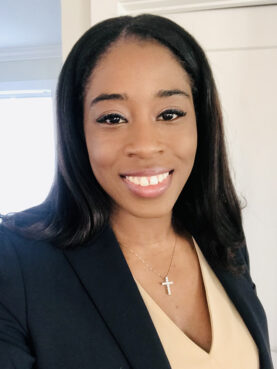
Bronze Adams. (Courtesy photo)
Bronze Adams, a 35-year-old African American graduate school student, attends two predominantly Black churches in the Washington, D.C., area. She likes the variety, she said, and appreciates different things about each church.
“At First Baptist, I know I’m going to get a great word,” she said. “The message is going to be direct. It’s going to be clear. There’s going to be four points. And then at Union, the same thing, but sometimes the topics are more relatable, might be a little more current.”
Her attendance has been a mix of in-person and online worship, but lately it’s mostly been online because of work, school and motherhood. She is caring for her 5-month-old baby.
So most Sundays, Adams starts out at 8 a.m. watching First Baptist Church of Glenarden International, a megachurch in Upper Marlboro, Maryland. At 10:15 a.m., she then tunes into services at Union Church, a multisite church based outside Baltimore.
“While the service is going on, I’ll have a pen and paper, I’ll just jot down what the pastor is preaching on and take a little shorthand, some notes, to refer back to for later,” Adams said. “I’m definitely singing, standing up, even at home, hands up, worshipping. And then my Bible is on my phone. I do have a physical Bible, though, but I do read from my phone.”
Michael Woolf, senior minister of Lake Street Church of Evanston, Illinois, a congregation affiliated with the American Baptist Churches USA, said most people who consider joining his church have watched several of the services online before ever attending in person.
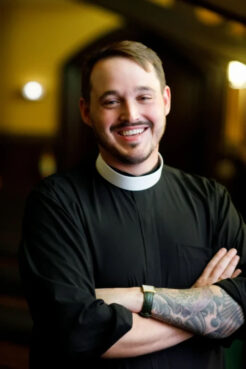
The Rev. Michael Woolf. (Courtesy photo)
“People are better consumers than they used to be, as far as being able to understand keywords and how churches position themselves, what they talk about on the website, what they talk about in service,” he said.
More recently, church members will — sometimes sheepishly — admit that they attend elsewhere and explain why.
“They’ll say, ‘This church does this well, that church does that well, and we’re going to put them together to make the more fulsome religious experience we want,’” Woolf said.
The 35-year-old pastor said competition for church attendance is so stiff, he’s happy to have people at any level — even if it’s only 10% of their churchgoing habits. He’s recently added eight new members to the congregation’s 250. With membership, participants get to vote at church meetings and serve on church boards.
In some more conservative evangelical churches, an exclusive membership to one church is still highly valued as commitment to a “covenant community,” one that holds members accountable to one another.
But increasingly, large churches, and especially megachurches, have relaxed those expectations.
Jack Landis and his wife, June, both served as missionaries for Child Evangelism Fellowship of Chester County, Pennsylvania. Now retired and living in Carlisle, Pennsylvania, they attend two churches in person: Carlisle Evangelical Free Church, a large church with three campuses, and Community Christian Fellowship, a small church June attended as a child. They appreciate the contemporary style of Carlisle but they want to stay connected to family members and friends at Community Christian.
“We spent 27 years traveling from church to church to church and loved it. So this was not like an adjustment for us to go to two churches at one time,” Jack Landis said.
He wanted to be up-front about it, though, so he approached the lead pastor of the larger church to explain that he and his wife were also participating in another church.
“Before I even got to really say much, he said, ‘Well, you don’t have to join to serve,’” Landis recalled his pastor saying. “I said, ‘That was my next question.’ He got it out before I even asked it.”
For many retirees who have recently moved, attending a new church and an old church is common, pastors said.
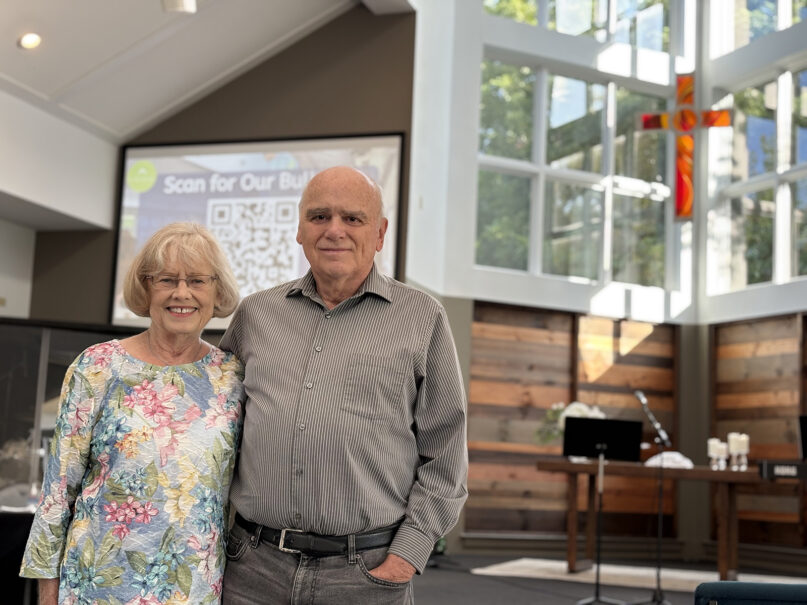
Cindy and David Jackson at The Peak Church in Apex, N.C., on Aug. 3, 2025. RNS photo by Yonat Shimron
Cindy and David Jackson raised their three children in the Dallas suburb of Bedford, where they attended Martin United Methodist Church. When two of their children moved to North Carolina, for work and school, Cindy and David followed.
The retired couple attend the early worship service at The Peak Church, a United Methodist congregation in Apex, North Carolina, in person. Afterward they go home, log onto Zoom and participate — and take turns teaching — their old Sunday school class back in Texas. (The Sunday school class began meeting online during COVID-19 and hasn’t stopped since.)
“We kind of get a double dose on Sundays,” said Cindy Jackson, a 74-year-old retired speech pathologist.
There are, of course, drawbacks when online participation is the main source of community. When Hope moved to a different house in Portland, she recognized that members of her New York City church wouldn’t be there to help her.
“I think there is something lost in that,” she said. “But I think we find it in new ways. For example, she said, the Pacific Northwest members have a WhatsApp group chat where members will text “grace and peace” to each other during the part of the service where in-person attenders greet one another.
“A lot has changed,” she said. “There’s a psalm that says, ‘Sing to the Lord a new song,’ and it feels like God is singing a new song.”
RELATED: Pastors, learn to lean into your ‘two-timing’ congregants
